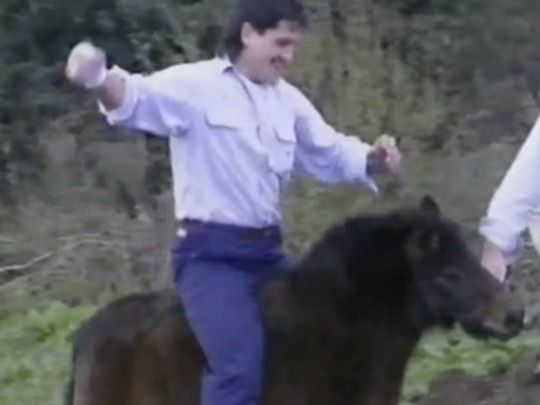
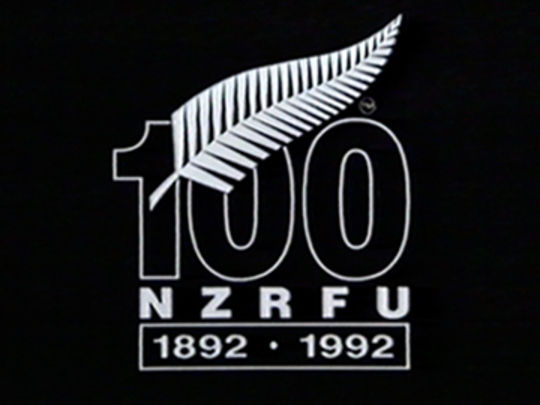
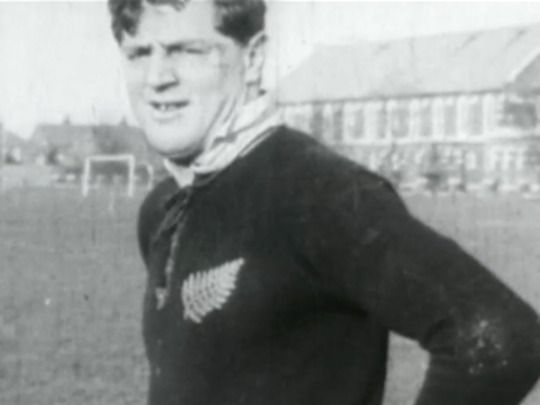
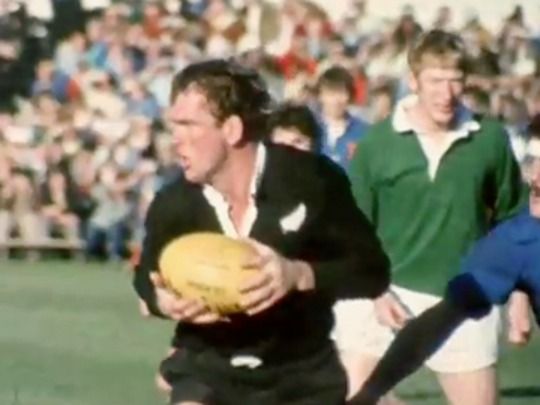
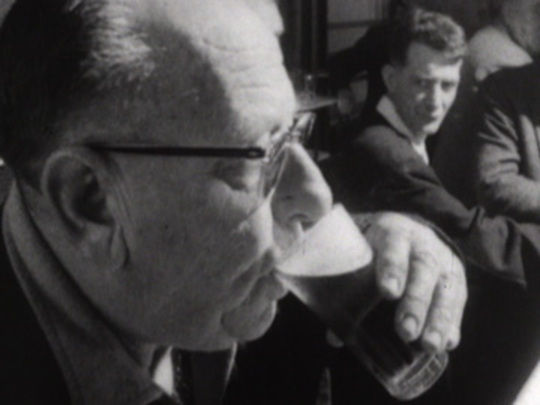
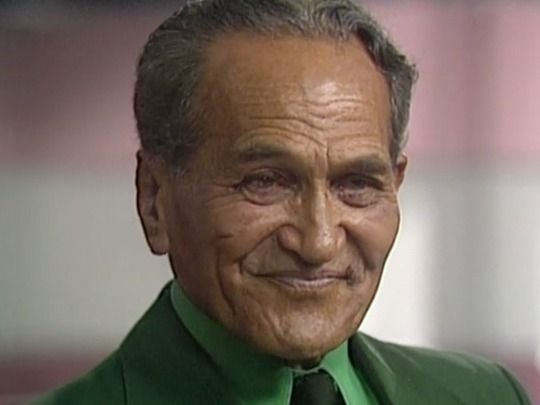
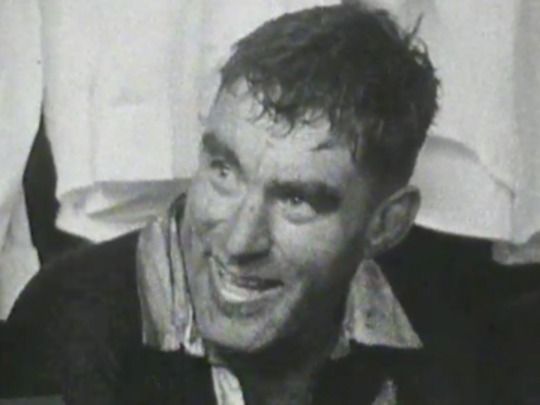
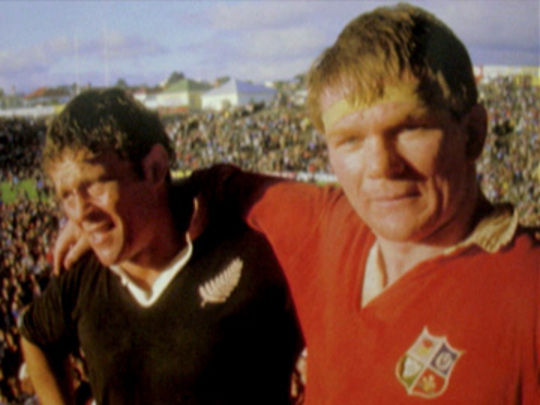
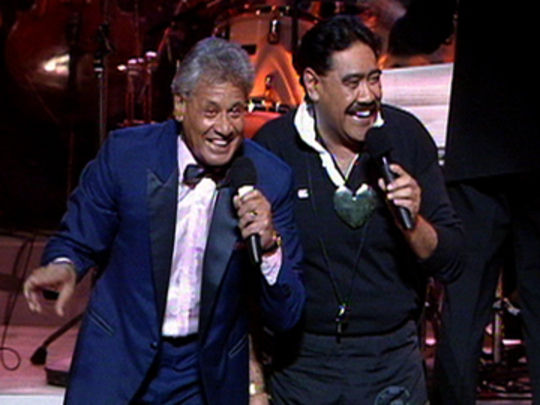
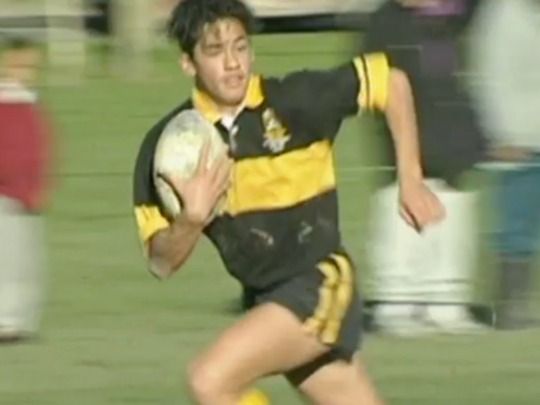

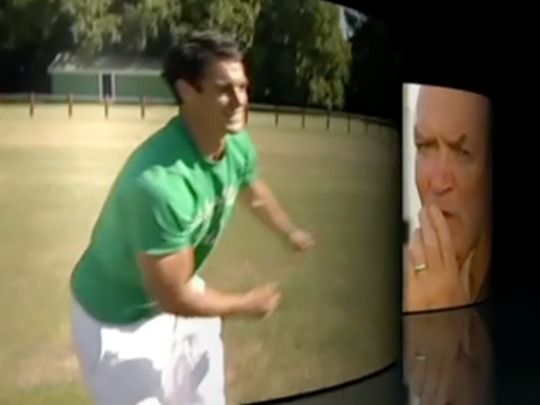
Rugby
Rugby
This collection has two backgrounds:
Rugby, religion, and Shortland Street

Milestones of Rugby Broadcasting in New Zealand
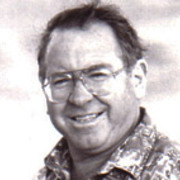
Rugby, religion, and Shortland Street
By David Geary 15 Sep 2011
Rugby – is it a religion? It gives us community. We worship those who sacrifice their bodies for the good of all. It makes beer taste better. Hell, there’s even a ‘Sin Bin’. Score, the NFU short by Arthur Everard, certainly takes our passion for rugby to the level of religious art. The slow-mo footage of the 1979 French tour is cut to Tchaikovsky, lifting us from the murky depths of the maul to fleeting moments of grace. It’s also a record of New Zealand rugby Pre-Polynisation, with no players of Pacific Island descent appearing in any Kiwi teams.
For a record of the Polysaturated modern rugby era, check out the 2004 bro’Town episode ‘Get Rucked’, where the St Sylvester’s Old Boys are an all-star PI line-up (Tana Umaga, Joe Rokocoko, and most of the Warriors), the Savages' coach is All Black legend Michael Jones, and there’s nary a Pākehā player to be seen.
Māori however, have been integral to the game in Aotearoa since its beginnings. Māori and rugby is as Kiwi as ... the haka: the stirring pre-game ritual that is uniquely ‘ours’, a dance we could share, and stop the traffic with in a flash mob.
The NZ Māori rugby relationship is well represented in this collection. Short and long dramas, Warbrick and Savage Play, tackle the culture clashes surrounding the Native team’s 1888-89 tour of Britain, and how the game first became a way for Māori to gain mana in the Pākehā world.
George Nepia embodies the gospels of fair play and humility. A true gentleman [see his This is your Life tribute], he also helps dispel the oft trotted out myth that Māori and rugby were a good match because it reflected their ‘warrior culture’. Ngati Porou East Coast 2001 – True Colours instead shows that for Māori, rugby can embrace whānaungatanga, a sense of kinship and family connection.
For an insightful social history of rugby, check out The Game of Our Lives - Home and Away. This episode embraces, explores and kicks to touch some myths surrounding our game. For all that is made of how rugby reflected the rough and ready lives of the pioneers who broke in the land, we discover that it was actually the clerks in the towns who formed the first clubs, and then went on missionary trips into the wops to recruit converts.
So rugby brings people together, right? Not when we played apartheid South Africa. The 1981 Springbok tour is probably the most divisive event in our history. Merata Mita’s definitive doco Patu! covers the NZ angle on ’81, while Try Revolution gets stuck into the South African reaction to our winter of discontent.
The various Springbok tours over the years have inspired many artists to make works of protest. Here you’ll find dramatist Bruce Mason’s lost TV gem The Garlick Thrust. Also — next to Howard Morrison’s ‘My Old Man’s An All Black’ or ‘On the Ball’ — perhaps our greatest rugby song, Don McGlashan’s 'Don’t Go'.
The 1987 Rugby World Cup helped resurrect the game, but it wasn’t long before pro-rugby brought more soul searching. Where once an All Black jersey was enshrined as a holy grail in the clubrooms, now you could buy one, and a player.
Greg McGee’s tele-feature, Skin and Bone, updated his celebrated play, Foreskin’s Lament. Skin and Bone nails the tough transition to professionalism by exposing the New Zealand Psycho — the man who’d kick his teammate in the head to get the contract. Yes, big business had arrived.
Rugby has always been a test of character. But in the new era the pressure was on off the paddock, too. Some failed in very public ways. When a blotto Norm Hewitt smashed through the wrong Queenstown ranchslider he started a new rugby tradition — the tearful “I am an All Black and I have a problem with alcohol” public apology. Just for the record, five of the current (as of 2011) RWC squad have come to the attention of the police for various misdemeanours while under the influence. But where Hewitt is dubbed a ‘Gladiator’, his is really a Cinderella story. From bully boy to Māori captain and AB bench warmer, big blubber to youth worker to dancing with the stars. Norm shows just how versatile he is here by interviewing a social worker on the mean streets of South Auckland.
John Kirwan is another ex-All Black to make a remarkable character transformation. From Auckland and All Black Adonis to Achilles, when he blew his ankle. He then made a Lazarus-like comeback only to admit that depression was a killer and he was battling it. He would go on to coach internationally and become our Dr Drew, as he fronts the campaign to help others who suffer the blues. In a country of strong silent types, who struggle to get their aggro out, bottling things up then bottling someone else, this was his most heroic play.
Kirwan’s narration of 1989’s The Good, The Bad and The Rugby, Survey: Take Three Passions with TP McLean, and pretty much everything else in this great clip collection, also shows us rugby’s most under-rated contribution to our culture — it gives us something to talk about.
It’s become our daily bread, our communion, a dose of soap as regular as Shortland Street. Who’s out? Who’s in? Who shouldn’t be there? The coaches, the players, the cheats. Whose place are we watching it at? Who’s bringing what? And how will we ever keep the faith if we lose again? ... But maybe that’s why they’re called tests?
In a land of few festivals we can call ours, where “Black! Black! Black!” was for a long time our only fashion statement, rugby gives us a chance to rejoice together — the religion we’re having when we’re not having a religion. Amen.
David Geary is a Bruce Mason Award-winning playwright (Lovelock’s Dream Run, The Learner’s Stand), fiction writer, scriptwriter (Jackson’s Wharf, Mercy Peak), occasional actor (Eau de la Vie) and touch footy player. His first full-length play – Pack of Girls – was about a women’s rugby team.
Milestones of Rugby Broadcasting in New Zealand
By Keith Quinn 15 Sep 2011
Whether listening to rugby on radio, watching on television, or now, on computer screens, listening to rugby commentary is very familiar to all New Zealanders; and its history is suitably colourful.
It is claimed by some that Christchurch’s Alan Allardyce was the world’s first radio rugby commentator when he broadcast a match from Lancaster Park on 29 May 1926.
It is said that the public had difficulty in following sporting commentary in the earliest of days. The first commentators paid scant regard to telling their listeners where play was situated at any time on the field.
But rugby found an early answer for this problem. The first BBC commentator HBT (‘Teddy’) Wakelam devised a system of publishing on match days in daily papers a map of the playing field, which was divided into numbered squares. ‘Square One’ for instance, was in the middle of the field. Listeners would place the map in front of their radios at home. An assistant would then sit behind the commentator and call out over the top of the broadcaster the number of the square where the game had moved to on the field.
These days in general conversation when you hear someone say “oh well it's back to square one”, celebrate the fact that early rugby (and football) broadcasts gave that catch phrase to the world!
The first test match to be broadcast involving the All Blacks was in South Africa in 1928. The first broadcast of a test in NZ was from Carisbrook in Dunedin, 1930 when the British toured; the commentator was Alfred Canter. New Zealand never had a truly famous commentator though, until the emergence of Winston McCarthy in the years after World War II.
Working for the New Zealand Broadcasting Service (NZBS) and based in Wellington, McCarthy became renowned worldwide. He is remembered for his distinctive style and his commentary call — “listen! ... it’s a goal!” — a catch-cry which was perfect for radio.
Listening to full calls of the old McCarthy commentaries, the best part of his style was the rising and falling excitement he communicated by use of voice inflection. He introduced for the first time, tension, pace and tempo to rugby commentary. Today many callers are probably unaware but they still use a style very similar to the ‘McCarthy way’.
The first tour McCarthy went on as a commentator was in 1945-46, the 2nd NZEF Army team post-war tour of Britain and Europe [the ‘Kiwis’ can be seen playing Auckland in this Weekly Review newsreel on returning to NZ in 1946]. McCarthy was considered a full member of the team and appears in all the team photographs, as an ‘official’ reporter. McCarthy’s commentaries went on the BBC as well, and his exuberant style made him one of the most famous men in the team.
Scrapbooks of that tour contain numerous profiles of McCarthy, often written ahead of news about the actual players! McCarthy went on all the All Black tours until 1953-54, thereafter he commentated only home tests until 1959. He was still commentating All Black trials and some tour matches as late as 1968. His last tour as a reporter was as a columnist for Truth, to South Africa in 1970.
First experiments in television broadcasts of games came in Britain and the USA in the 1930s.
When TV arrived in New Zealand there soon arose a stern debate about whether matches should be telecast live in direct opposition to other rugby being played in New Zealand. At the height of his fame Winston McCarthy’s radio commentaries brought about the same debate.
It is not widely remembered that Saturday provincial matches of the Springboks tour in 1956 were not permitted to be broadcast live on radio. McCarthy’s popularity used to affect gate takings all over the country. As a young boy this writer can remember running home from local games to be present in the front room at home in time for the radio replay of McCarthy’s tour match at 5 o’clock in the afternoon.
Radio news broadcasts, sparse as they were in those days, did not dare to give away the result beforehand. However test matches were always live. Club games all over the country were played earlier on those days to allow people to be present in front of their radios by mid-afternoon.
With the arrival of television in New Zealand in the early 1960s the debate over TV’s impact on live attendance, was repeated. Rugby tests were not shown live on TV until 1972. Throughout the 60s games were delayed from Saturdays through to Sunday evenings. In those days there were no microwave links around New Zealand so bulky videotapes had to be flown overnight from the city where the test match had been played to each of the regional channels.
The first live telecast involving an All Black team came from Twickenham in 1953-54. Of course it was never shown in New Zealand as there was no local TV system in operation. TVNZ now holds an archives copy of the game.
By 1953 the BBC had regular telecasts, but such was Winston McCarthy’s fame as a radio caller throughout Britain that the BBC TV commentator on the day of the New Zealand game, Peter West, made a crossover during his broadcast to listen to what McCarthy was saying on radio. Such bizarre happenings could never be contemplated today. Such was the worldwide curiosity and magnitude of Winston McCarthy’s style.
The first New Zealand experiments with TV took place at a Barbarians Rugby Club match in Thames in 1954, and the first full videotaping of a test match for later replay in New Zealand came in 1962, when New Zealand played Australia at Dunedin. The commentator was Charles Martin. New Zealand won the match by 3-0, the only scoring being a Don Clarke penalty goal [‘The Boot’ can be seen demonstrating his famous kicking style here]. In the early days of TV the commentators were often the local radio commentator drafted across to TV for the day, which allowed Winston McCarthy, as the ‘tour commentator’ to call the game on radio.
The first live telecast of a test match in New Zealand came in 1972 from Eden Park when the All Blacks won by 38-3, then a record test score. Television was still in black and white in those days. The commentator was Bill McCarthy (no relation to Winston), who was later to become a network news presenter. The first local colour telecast of test rugby came in 1975, at the infamous ‘water polo’ test at Eden Park against Scotland. Earlier the first satellite telecast to come in live to New Zealand had been Wales v New Zealand late in 1972 from Cardiff.
Thereafter telecasts became a regular feature of weekly winter domestic television. By 1974 all All Black test matches — wherever they were played — were shown live on TV.
As the Government-owned TV organisation, TVNZ continued to hold rights to show all games until 1999. Then the rights switched to the privately owned subscriber TV Network, Sky TV. They have steadily expanded coverage so that by the early years of the new century not only all tests, both at home and abroad, were shown, but all representative matches were telecast as well. A full ‘Rugby Channel’ was started in 2001.
Coverage of the first Rugby World Cup in 1987 was a major achievement at the time for TVNZ. There were many compliments paid to the full coverage of all 32 games. By 2011 and the playing of the seventh Rugby World Cup tournament, ‘coverage style’ of presentation had expanded. The final in 2011 was scheduled to be covered in High Definition by 38 live cameras, and screened to an unprecedented international rugby audience.
Notes:
1. A list of the main test match radio commentators: Alan Allardyce, Joe King, Charles Williams, Winston McCarthy, Bob Irvine, Brian Russ, John Howson, John McBeth, Graeme Moody and Andrew Saville.
2. A list of the main test match television commentators: Charles Martin, David (‘Doc’) Williams, Bill McCarthy, Ron Findlay, Keith McEwen, Iain Gallaway, Brian Russ, Colin Snedden, Keith Quinn, Brendan Telfer, Grant Nisbett, John McBeth, Grant Nisbett, Hamish McKay, Tony Johnson and Scott Stevenson.
3. A number of prominent ex-All Blacks have become TV ‘expert’ commentators as well; these include Earle Kirton, Wayne Graham, Grant Fox, Jock Hobbs, Murray Mexted and Justin Marshall
Keith Quinn is a New Zealand sports broadcasting icon. Of his many memorable commentary moments, perhaps the most famous was when he was lost for words as Jonah Lomu scored against England in the 1995 Rugby World Cup: “Lomu ... oh ...oh!”.